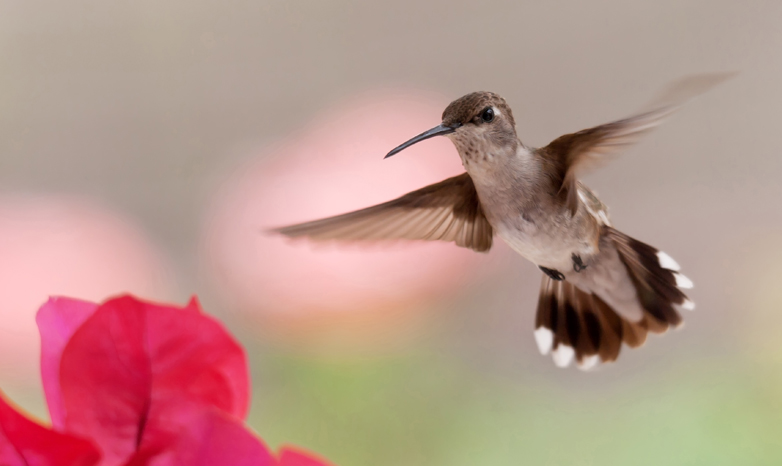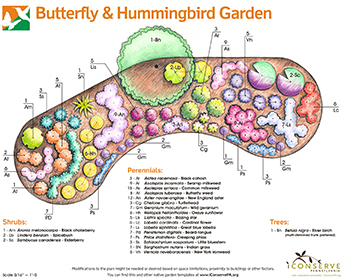Gardening project blooms into reality

A new butterfly and hummingbird garden at SRU’s Leadership Development Center is hopeful of attracting many “visitors” like this in the near future.
June 27, 2016
SLIPPERY ROCK, Pa. - The front yard at Slippery Rock University's Leadership Development Center may not seem like paradise, but the space could soon be a haven for a variety of indigenous plant life, butterflies and hummingbirds courtesy of two University staffers.
Erin Strain, director of SRU leadership development at the LDC, and Brian Ringler, a member of SRU's grounds and services crew, began transforming the LDC's front yard into a sanctuary last June. The duo's initiative, formally known as the "Butterfly and Hummingbird Garden," came about as a peaceful result to some alarming conclusions.
As the pair observed and researched plant and wildlife near the facility, they were alarmed to learn that 5 percent of the state's plant species had been eradicated with another 25 percent in danger of extinction.
For Strain and Ringler, the development of the garden was a humble attempt to assume some environmental responsibility and to do their fair share in reversing the damage they found so distressing.
"By being proactive and planting a native garden, we've aimed to protect and enhance the diversity that remained for not only the plant life, but the butterflies and hummingbirds that count on those plants in carrying out their environmental objectives," said Strain.
In designing the garden, the pair settled on a design promoted by iConservePA that incorporates 16 different types of native perennials and three different types of native shrubs to provide a welcoming habitat for both the hummingbirds and butterflies. SRU's Green Fund provided funding for the plants. The Green Fund helps environmentally friendly programs on campus with monies to support approved sustainably progressive projects, educational programs and activities that promote sustainability.
Strain and Ringler also adopted an environmentally friendly "lasagna method" in the garden's development. A process that spares demolishment of the pre-existing landscape, the method layers a series of organic and compostable ingredients on top of the current soil including: recycled newspaper and boxes, water and six inches of natural hardwood mulch that is then "baked" in the sun for approximately nine months.
The process is preferred for its soil renewal qualities and low maintenance requirements. The benefits of the method allow for a more pliable soil with fewer weeds, improved water retention and a decreased need for fertilizer. It also reduces labor, builds soil levels and fertility, sequesters carbon, cools root systems, slows evaporation and run-off and preserves the strata of microorganisms.
The pair hopes that the benefits of the garden transcend the intended environmental advantages.
"Our goals for (the garden) are fourfold," said Ringler. "We want to see (the garden) become an educational asset to the University's biology and science classes, increase the marketability of the campus, create more beauty for everyone to enjoy and of course, protect as many native species as possible."
MEDIA CONTACT: Maizee Zaccone | 724.738.2091 | mxz1016@sru.edu


